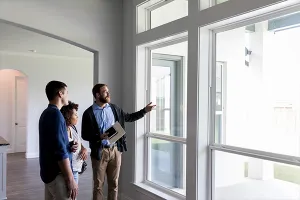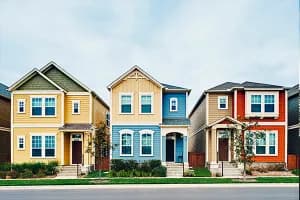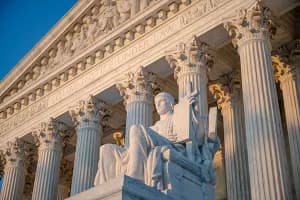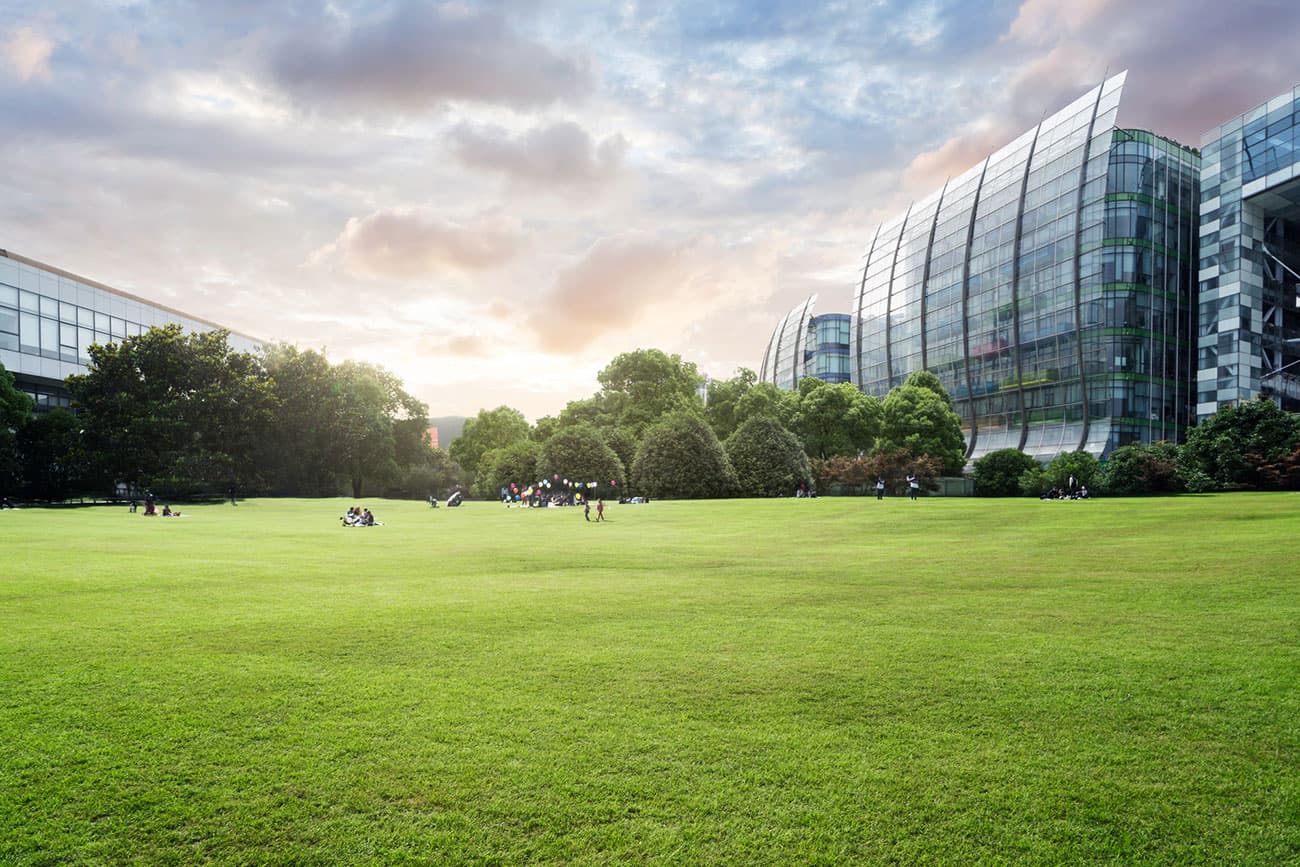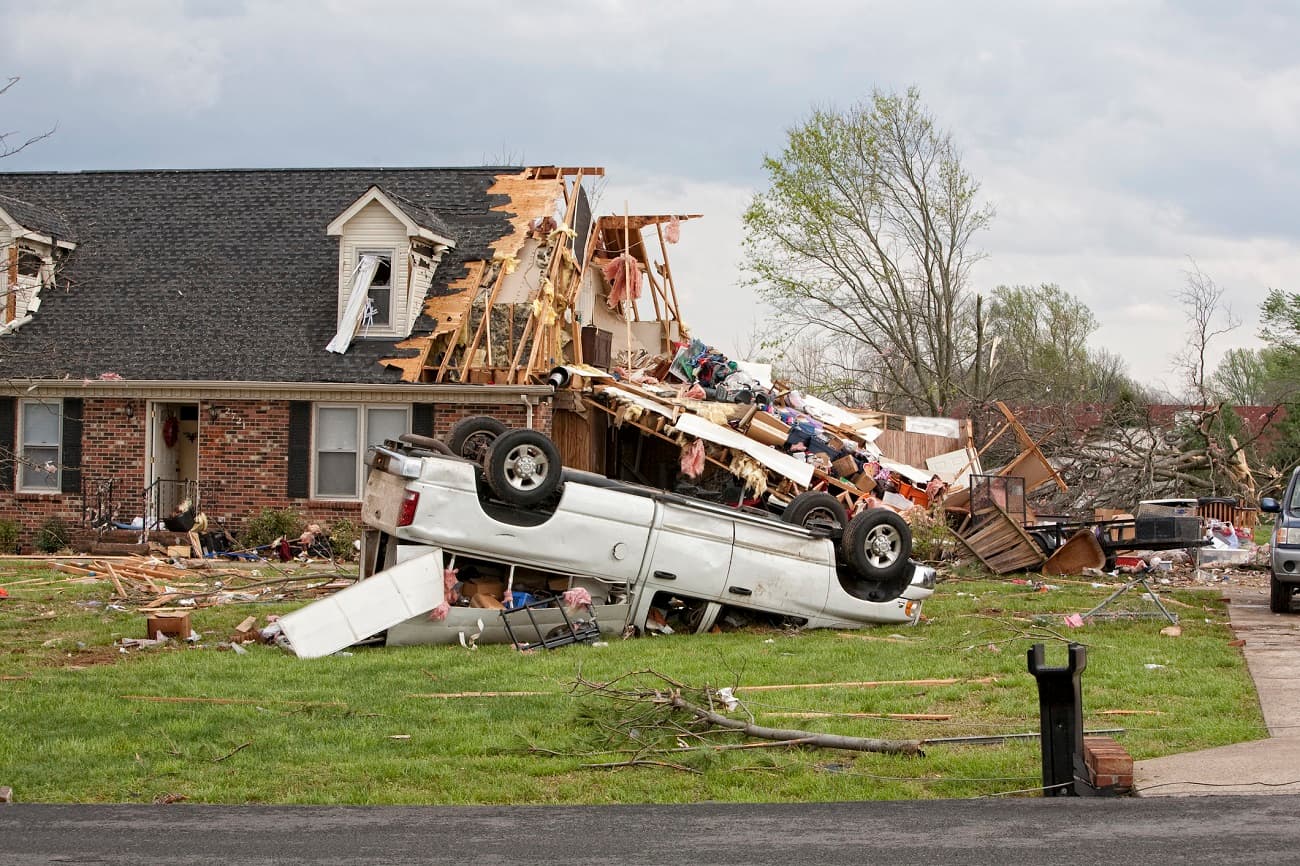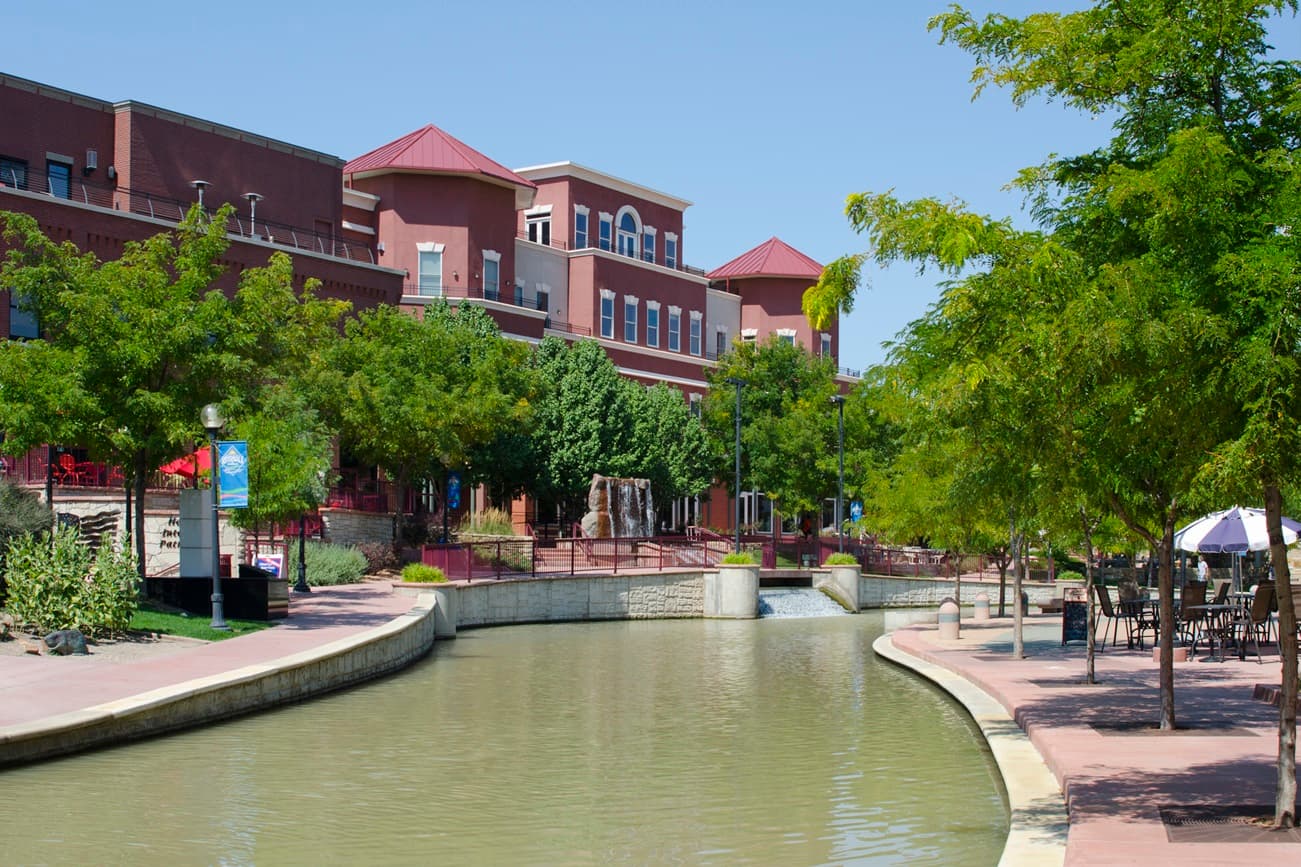For centuries, vernacular building techniques used local materials and a knowledge of local conditions to create buildings that were naturally resistant to disastrous weather.
Somewhere in the mid-20th century, conventional building was reflected in suburban sprawl building patterns and mass production with materials sourced from far away.

When LEED was introduced in 2000 by the U.S. Green Building Council, sustainable building and the long-term financial rewards of investing in sustainable building became part of our vocabulary.
Today, more brutal (in terms of loss of life and billions in property) natural disasters are happening more frequently. Wildfires, hurricanes, floods and other disasters threaten all that we hold dear.
Planners, architects, builders, developers, REALTORS® and even insurance companies are rallying to get a handle on resilient design.
From protecting individual buildings to entire communities, the professions that shape our built environment and way of life are searching for best practices that will prepare us for and protect us from extreme-weather impacts.
Areas devastated by flooding and windstorms are looking to the nature-based resiliency and self-sufficient sustainability of Florida’s Babcock Ranch—which has survived a hurricane that virtually destroyed nearby Gulf Coast communities (see Babcock Ranch information).When communities rebuild after wildfires and other disasters, the president elect of the American Institute of Architects and a leading Disability/Aging in Place/Environment advocate, Illya Azaroff, champions the benefits of Universal Design. Residential and commercial space that is designed to accommodate all ages and abilities adds flexibility, durability and cost efficiency—similar to green building (see Universal Design information).
Planners, architects, builders, developers, REALTORS® and even insurance companies are rallying to get a handle on resilient design.
Wildfires and Other Disasters Exacerbating Insurance Crisis
Costar, a real estate data and analytics company reported “the most destructive wildfires in California history are expected to send insurance rates surging, adding another headwind for owners of multifamily properties in Los Angeles and potentially hindering affordable housing goals.”
The report notes that The American Property Casualty Insurance Association has lobbied Congress to pass more laws to address wildfire risks—such as the Fix Our Forests Act that seeks to increase the pace and scale of forest management and establishes a program to better coordinate federal agencies to reduce wildfire damage to properties.

“Even before the fires, a shortage of affordable housing in Los Angeles created a pall on overall economic growth … Renters in Los Angeles County need to earn $48.04 per hour—nearly triple the minimum wage—to afford the average monthly asking rent of about $2,500, according to the California Housing Partnership. That average is about 45 percent higher than national rents …” stated the report by Costar.
How to Design Resilient and Build Back Better
Barry J. Long, Jr., AIA, LEED AP, is principal and president of Urban Design Associates (UDA), a Pittsburgh-based firm that has a national practice of helping communities recover from disaster. UDA worked to rebuild Paradise, Calif., where a 2018 fire destroyed more than 18,000 structures, including over 14,000 homes, and killed 85 people.
Building back affordably is a higher priority for disaster survivors than building back to be fire resistant.
Long noted that more than six years after the fire, Paradise is only about 25 percent built back. Businesses have been slow to come back, because there’s not enough population to support them.

“When you think of just the economic piece—the town of Paradise lost their tax base in a day,” Long said. “They had to get outside funding to backfill their tax roll to 2055. They had naturally occurring affordable housing in a three-county region—but much of that will be lost because of the high cost of rebuilding.”
Long said building back affordably is a higher priority for disaster survivors than building back to be fire resistant. He said many cities push back on building codes that require more than the International Wildland-Urban Interface (WUI) code, which sets minimum regulations for safeguarding life and property from the intrusion of wildfires.
He said the code helps, but it doesn’t ensure a property is insurable. UDA creates resilient design that helps make properties insurable, while mitigating the costs of insurance in high-risk areas. After UDA’s work, Paradise adopted its own wildfire ordinance to require that people maintain their lots to reduce combustible material. “Paradise has very strong code enforcement now.” Long said.
“There is no such thing as a fireproof home,” Long said. “You can harden by having a fire-resistant roof, closing up vents to keep embers out and using windows that don’t melt and fall out. Fireproofing the lot means nothing combustible within five feet of the structure. Set aside the [aesthetics] of plants and mulch around the foundation, and don’t build wood fences up to the side of a home.”

Long said tree canopies need a clear zone under them. Ladder fuels are combustible vegetation that lead a fire to a structure. “What you surround the house with—is like setting a campfire around the structure.”
“Developers are being proactive. They have to ensure their developments are insurable,” Long said. “This is not just in western states; it’s a national issue.”
The American Institute of Architects Looks at Resiliency Standards
Jessica Orlando, AIA, DBIA, WELL AP, is an associate principal at Perkins & Will who is leading the extensive recovery efforts for the AIA Pasadena & Foothill chapter.
“There are a lot of conversations about what we should be rebuilding—to look at resiliency standards,” she said. “When it comes to protecting homes that were not built to resist fires, “Fire Safe Marin” [California] is a great guide for retrofitting with some very simple and cost-effective approaches.”
Orlando said the AIA also is looking at what it can do for working-class families that lost their homes to fires in the Altadena area. She said many multigenerational families were living in housing that was uninsured or under insured. Those families lost their source of generational wealth.
“Resiliency includes making sure we’re building back equitably. There are some very early discussions of collaborations with community land trusts, one way those families’ assets can be rebuilt,” she said, noting that the cost of rebuilding is out of reach for many.
Ten Principles for Building Resilience
The Urban Land Institute (ULI), a global organization of more than 40,000 real estate and urban development professionals, summarizes its resilience work since Hurricane Sandy in its 2018 Ten Principles for Building Resilience publicationpdf. Highlights include:
- Accurately Price the Cost of Inaction: Recent extreme weather events suggest that the costs of not investing in resilience and risk reduction are dramatically increasing.
- Design with Natural Systems: Designing resilience relies upon an understanding of the function and geography of natural systems and how they can help strengthen manmade systems and communities.
- Redefine How and Where to Build: Building resilience entails identifying and investing in places and infrastructure that are the most likely to endure.
HOAS and Condo Associations Can’t Ignore Risks and Repairs
Dawn M. Bauman is chief strategy officer at Community Associations Institute (CAI) and executive director of the Foundation for Community Association Research. CAI is the leading international organization representing the condominium, homeowners association and housing cooperative sector. The CAI says this is the fastest growing type of housing in the world and represents at least 30 percent of housing worldwide.

We are encouraging community associations to incorporate mitigation practices when it comes to wildfire, flood, hurricanes, etc.
“Knowing what we know now, we are encouraging community associations to incorporate mitigation practices when it comes to wildfire, flood, hurricanes, etc.,” Bauman said. “[CAI] helps associations to understand that with a reasonable investment, they’ll be able to experience a return—whether it’s a more resilient building, lower insurance premiums, less maintenance cost, or greater sustainability.”
Since 98 people were killed in the collapse of the Champlain Towers South condominium building in Surfside, Fla., Bauman has led efforts on the local, state and national level to develop policy changes for safer condominium buildings.
“For condominium buildings, owners must make sure that regular maintenance is happening. Regular, scheduled maintenance must identify building vulnerability so modifications can be made to make a safer, stronger building,” she said. “Environmental sustainably can be as simple as changing windows so they are more secure and more energy efficient. That can make a huge change in the cost of maintaining a building with a relatively small investment.”
CAI is helping with the LA wildfires recovery, especially helping homeowner associations (HOAS) to navigate insurance claims and future coverage concerns. As rebuilding takes place, “we will be working with our communities to mitigate fire hazards, to avoid tragedy,” Bauman said.
“REALTORS® are so valuable, because they can educate purchasers on what they’re purchasing and what they need to know about an HOA or condo associations,” she said. “They can ask the associations if there is regular maintenance, major repairs outstanding, a reserve fund, a reserve study?”
AI Analyzing the Climate Risk of Every Neighborhood in the United States
AI is a partner in analyzing the risk of different areas for residential and commercial real estate. Parag Khanna, an author, speaker and innovator known for his analysis and macroeconomic forecasts, created Climate AlphaGeo—an AI-powered analytics platform.
AlphaGeo uses data to track trends in migration, the changing climate and finance to know which locations are most resilient and profitable as the world faces new weather-related challenges. The company offers location, investment and resilience strategies.
Resilient Communities—Looking Beyond Individual Properties
The early 2025 Los Angeles County wildfires caused at least 29 deaths and destroyed 16,000 structures — with an initial estimated cost of more than $50 billion.
Neal Payton, FAIA, FCNU, leads the Los Angeles-based west coast office of Torti Gallas + Partners, an urban and architectural design firm. Long before the wildfires the firm was transforming urban and suburban spaces with pedestrian-friendly environments with transit-oriented development and public housing renewal.
“The LA fires saw a significant number of commercial properties destroyed, including 135 small apartment buildings and 145 retail buildings. About 75 percent of the multifamily buildings destroyed or damaged contained 20 units or less and averaged 70 years of age. Most of them were owned by individuals or local investors and might rightfully be labeled as missing middle housing, also known as workforce housing,” Payton said. “This dispersed and finely grained ownership pattern poses both a challenge to the redevelopment of these fire-damaged areas but also provides an opportunity.”
Payton said while fires destroy buildings and leave the ground beneath them fallow, they do not erase property lines, or municipally owned rights-of-way, which he refers to as “facts on the ground.” He said reconciling a diffuse land ownership pattern is key to any successful and transformative redevelopment.
“Any rebuilding effort must begin by acknowledging these facts and then by going farther by asking some rather simple questions: ‘Why can’t we put apartments above the rebuilt retail spaces? Why can’t some of the small apartment buildings provide opportunities for ground floor office, maker spaces, or retail?’” he posited.
Payton said more resilient and equitable communities can rise from the ashes. “As charming and beloved as the historic centers of Pacific Palisades and Altadena were, the opportunity to reconsider the single-use land-use pattern of both locales stares us in the face. In the Palisades, some of the commercial space was organized in a car-centric pattern, with parking dominating the streetscape. So, in the case of the Palisades, we might ask, why can’t the new construction be built to frame and embrace generously sized sidewalks and relegate parking to a less visible location?” he said.
